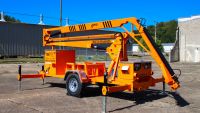Commercial Real Estate Is Sound
By Masonry
Most commercial real estate markets are enjoying relatively low vacancy rates and healthy rent growth from a fundamentally sound economy, according to the latest Commercial Real Estate Outlook of the National Association of Realtors (NAR).
NAR Senior Economist Lawrence Yun in a statement said, "Commercial real estate responds to economic growth and job creation, which have been fairly strong over the past two years and have created the need for additional commercial space. These fundamentals will continue to support commercial real estate markets in 2008. There has not been much overbuilding in the commercial sectors, and investors are more diverse."
Yun said pricing for some commercial real estate has been at a record high, and capitalization rates have been at historic lows. "Normalization of prices may be occurring, but it isn't clear what the definition of normal might be in the current market given the re-pricing of risk in the capital market," he said. "In short, the difference between the cash flow on a typical property and its price is close to a maximum, indicating prices may even out."
A record $257 billion was invested in commercial real estate in the first seven months of 2007, up from $146.7 billion in same period in 2006. That total does not include transactions valued at less than $5 million, or of investments in the hospitality sector.
Cindy Chandler of Charlotte, N.C., chair of the Realtors Commercial Alliance, said in a statement that there have been some problems recently regarding the availability of capital. "Overreaction to credit concerns in the financial markets could limit the availability of capital needed by private investors, but overall the situation does not appear to have significantly impacted institutional-grade commercial properties," she said. "We're returning to the fundamentals and deal structuring of the mid-1990s and may see some dampening in investment activity, but there is a lot of momentum in commercial real estate.
"We see the commercial sectors holding at a healthy level of activity in most of the country, although there could be some slowing as a result of postponed transactions and delays in decision making."
Much of the new industrial supply has been on a build-to-suit basis, and building obsolescence remains a factor for distribution facilities. With tightening availability in many primary markets, users are starting to show greater interest in secondary markets.
Vacancy rates in the industrial sector are likely to average 9.6 percent in the fourth quarter and 9.4 percent by the end of 2008, compared with 9.4 percent in the fourth quarter of 2006. Annual rent growth will more than double to 3.9 percent by the end of this year, and is estimated at 3.7 percent in the fourth quarter of 2008, up from a 1.4 percent annual rise at the end of last year.
The areas with the lowest industrial vacancies include Los Angeles; Albuquerque; Tucson; Orange County, Calif.; Portland, Ore.; and San Francisco, all with vacancy rates of 5.4 percent or less.
Net absorption of industrial space in 58 markets tracked will probably total 125 million square feet in 2007 and 165.6 million next year, down from 202.8 million in 2006.
Industrial transaction volume in the first seven months of 2007 was $26.8 billion, up 13 percent from the same period in 2006. Private investors accounted for 36 percent of industrial purchases, followed by equity funds at 25 percent.
At the same time, potential first-time homebuyers are hesitant and staying in the rental market, supporting multifamily fundamentals until the lure of home-ownership returns, the housing cycle changes and more buyers enter the housing market.
Multifamily vacancy rates are likely to average 5.9 percent in the fourth quarter, the same as the fourth quarter of 2006, and then ease to 5.6 percent by the end of next year. Average rent is expected increase 2.9 percent this year and 3.8 percent in 2008, after a 4.1 percent rise last year.
Multifamily net absorption will probably total 209,200 units in 59 tracked metro areas this year, down from 229,400 in 2006, but increase to 234,400 in 2008.
The areas with the lowest apartment vacancies include northern New Jersey; Salt Lake City; Philadelphia; Pittsburgh; Los Angeles; Minneapolis; and Nashville, Tenn., all with vacancy rates of 2.7 percent or less.
Multifamily transactions in the first seven months of this year totaled $46.3 billion, compared with $41.5 billion in the same period in 2006. Half of the purchases were by private investors, while condo converters accounted for only 3 percent of acquisitions.
About the Author
Masonry, the official publication of the Mason Contractors Association of America, covers every aspect of the mason contractor profession - equipment and techniques, building codes and standards, business planning, promoting your business, legal issues and more. Read or subscribe to Masonry magazine at www.masonrymagazine.com.
Torto Wheaton Research and Real Capital Analytics provided metro data.


















